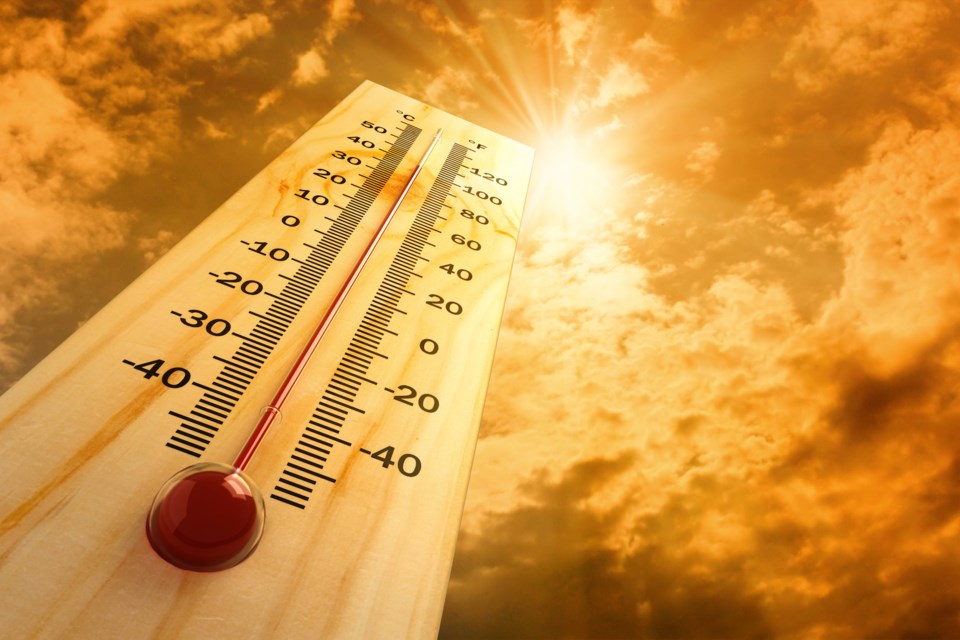Sault Ste. Marie and other Canadian communities need to prepare for dramatic changes to winter and summer temperatures, suggests a new municipal-level analysis of climate projections for the coming decades.
The Local News Data Hub at Ryerson University compared temperatures from 1951-80 with projections for the period 2051-80 using data from ClimateData.ca, a national data initiative bringing together scientists from university, government and private-sector organizations.
The results for 30 cities and towns show that in most locations there will be fewer days when the thermometer drops below zero. Residents accustomed to deep-freeze cold will encounter temperatures below -15 C less often. Sweltering summer heat above 30 C will be more common.
In the case of Sault Ste. Marie, the projections show that by 2051-80:
- The number of frost days when local temperatures will drop below 0 C will range from 117 to 147 per year on average. That’s down from 172 per year for the period 1951-80.
- There will be 15 to 29 days each year on average when the temperature falls below -15 degrees compared to 45 in the earlier period.
- The number of days on average per year with temperatures above 30 C will range from 10 to 25, up from 2 days per year for the period 1951-80.
The Data Hub’s analysis is based on what climate scientists call a moderate emissions scenario. The scenario is more ambitious than global attempts at reducing emissions to date, but also more pessimistic than the net-zero emissions targets that Canada and other countries worldwide pledged to reach in the 2015 Paris Agreement.
The projections from the federally funded ClimateData.ca portal are based on 24 different climate models. Comparing 30-year averages ensures that what is described reflects the overall climate and not the more variable experience of weather. The 2051-80 projections are presented as a range to capture both the lower (10th percentile) and higher end (90th percentile) of the models’ outcomes.
With the closing of the United Nations Climate Change Conference, known as COP26, in Glasgow, Scotland, many leaders face increasing pressures in their countries to embrace deeper cuts to greenhouse gas emissions and other measures to slow global warming. Prior to the summit, a United Nations report warned that the planet is currently headed for a temperature rise of 2.7 C by the end of the century that will “lead to catastrophic changes in the Earth’s climate.”
The reduction in cold days is no reason to rejoice, cautioned Greg Flato, a senior climate scientist with Environment and Climate Change Canada, because many Canadian ecosystems depend on extreme cold to kill pests and produce snow that stores the water needed later in the year.
“The fact that we get less extreme cold days is only one side of a much more important coin,” Flato added. “[It] also means that you get much more extreme hot days.”
For cities, this means “more frequent and more severe extreme rainfall events will contribute to urban flooding,” he wrote in an email. “Increasing frequency of heat waves will increase demand for cooling centres and put demands on emergency services and health systems.”
A federal report released earlier this year noted that although many municipalities are adopting initiatives including green roof requirements, rain barrel rebates, water-permeable pavement and heat- and drought-resistant trees, “cities and towns [are] not keeping pace with the risks posed by current weather extremes and future climate changes.”
Flato, who is vice-chair of the Intergovernmental Panel on Climate Change group that authored a recent report on the dire consequences of global warming, said storm drainage and sewage systems, roads, buildings and air conditioning systems are at risk of being overwhelmed by increases in extreme precipitation and heat.
“Almost everything that you look at when you walk out in the city has been designed for a climate that we no longer have,” he said.
The record temperatures this past summer in western Canada, Flato added, will become more frequent and extreme as the climate warms. During a nine-day heat wave in late June 2021, a wildfire swept through the village of Lytton, B.C., burning it to the ground just one day after the local temperature hit 49.6 C, the hottest ever recorded in Canada. That heat wave killed 526 people in British Columbia, many of them elderly people in the Vancouver area, in what health officials deemed the deadliest weather event in Canadian history.
Hotter summers and warmer winters also spell trouble for communities in northern Canada where thawing permafrost is a top concern, said Brian Horton, manager of the Northern Climate ExChange at the Yukon Research Centre. “We’re already seeing places where permafrost is warmed, it is thawing,” he said. “That can sever a highway, it can cause long-term damage to buildings and really gradual damage, or really sudden damage.”
University of Winnipeg geography associate professor Nora Casson said that individuals can help change the course of history by voting and also by pressuring local, provincial and federal officials to support community efforts to mitigate and adapt to climate change.
“The impacts of climate change across Canada are really regionally different, so adaptation solutions need to be done in consultation with local governments, with Indigenous governments,” she said. “None of the solutions are going to work without buy-in from the community.”
This story was produced by the Local News Data Hub, a project of the Local News Research Project at X (also known as Ryerson) University’s School of Journalism. The Canadian Press is an operational partner of the initiative. Detailed information on the data and methodology can be found here.
